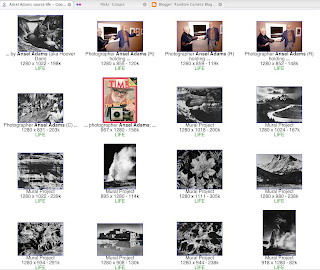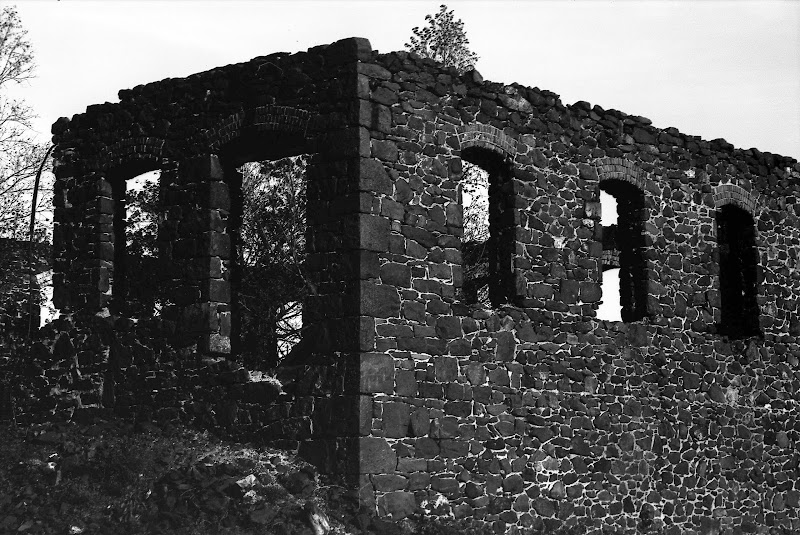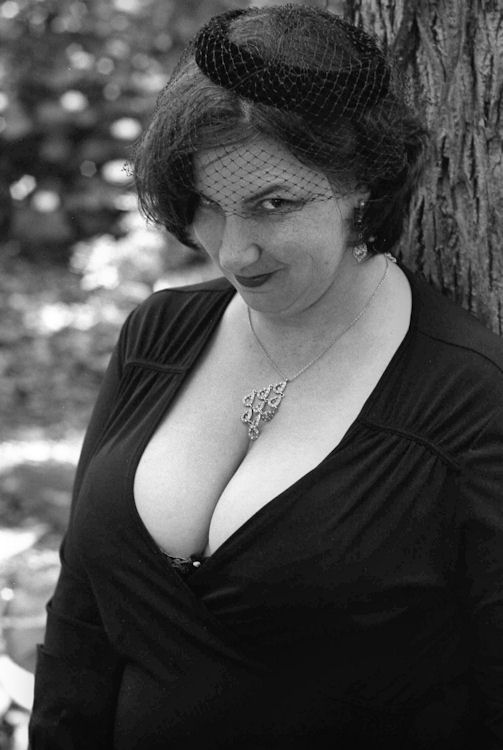
The Christmas holidays are a great time for photographic fun with the lights on the Christmas tree, candles, and other holiday lighting displays.
If, like me, you live in a northern climate where December nights are usually cold and snowy, indoor tree lighting is much preferred. There are some tutorials available on the web that show you how to create overlays in front of the lens with cutouts that act as the aperture, and combined with a fast lens (large maximum aperture - i.e., f/2 to f1.4) you'll get the out of focus (OOF) highlights with the same shape as the cutouts. Popularly called bokeh, these OOF shapes are the same shape as the aperture -- usually circular in a good lens. However, by using these cutouts in front of the lens, you'll get bokeh the same shape as the cutouts.

Cokin Filter Holder and Gel-filter mount with cutout.
My technique differs from the other ones online. First of all, I decided to use a Cokin filter holder to place the cutouts in front of the lens, rather than cobbling something together with tape. Use a gel filter-holder in the Cokin filter unit to fold the piece of black paper that we'll use.
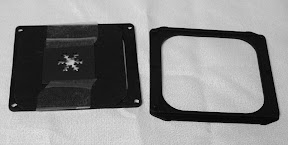
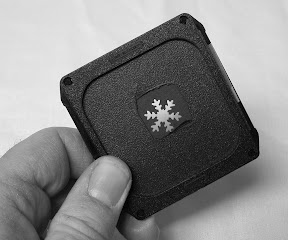
Second, instead of cutting my own holes with an sharp hobby knife, I used punches easily found at craft stores. For the snowflake, I used a 15mm wide snowflake punch that I bought at Michaels' for about $3. Since these punches can only go so far from the edge of the paper, I found it was easier to cut a square into the larger piece of black paper and then tape the smaller piece of paper with the punched hole over the square, and then place that into the gel-filter adapter on the Cokin filter holder. This is really pretty quick and easy, allowing you to experiment with different shapes - either done freehand or with a punch.
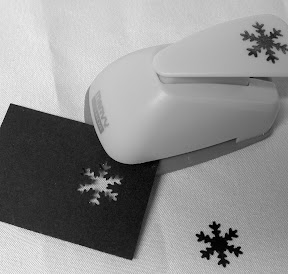
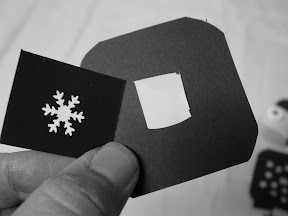
 Try different shapes!
Try different shapes!If you don't have a Cokin filter holder -- they are easily available online from B&H, Adorama, and Freestyle Photo (and ebay). They are cheap, and allow you to also use a multitude of cool filters on your SLR (which are beyond the scope of this blog post for now). The filters typically have a ring that you screw into the front of a lens -- 52, 55, 58 mm are typical sizes for filter rings. Make sure you get the right size to fit your fast PRIME lens (not a zoom). Your lens can be a 50mm focal length or 30, 45, 60 or 85mm, but the WIDEST aperture should be f/1.8.

The color photo was made shooting wide-open and with the tree and lights completely out of focus. That gave me the large snowflakes. If you shoot a subject close-up with OOF highlights in the background, you'll get a nice effect.
The key here is that the snowflake pattern acts as the aperture, and 15mm is a good choice for the aperture size. Experiment with multiple shapes on the same piece of black paper, or repeated identical shapes, for different effects. You'll need to focus manually here, because the AF won't be able to focus with the shaped cutouts in front of the lens.
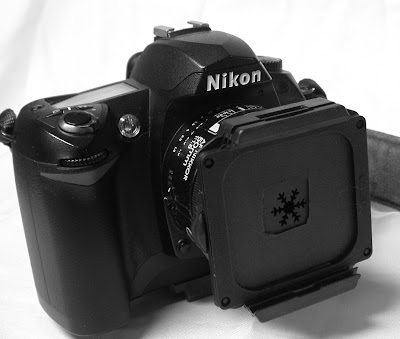
If you need to do this RIGHT NOW and can't wait for a Cokin holder, you can always use some gaffer's tape to hold the black paper mask in place in front of the lens. Not as elegant, but it works.
Happy Holidays!








